My last post was on the “toony” side of Vancouver’s Maple Leaf Publications and in it I stated that there were no real toons in Montreal’s Educational Projects Publishers. I now want to qualify that since I’ve been able to find three fillers that might qualify.
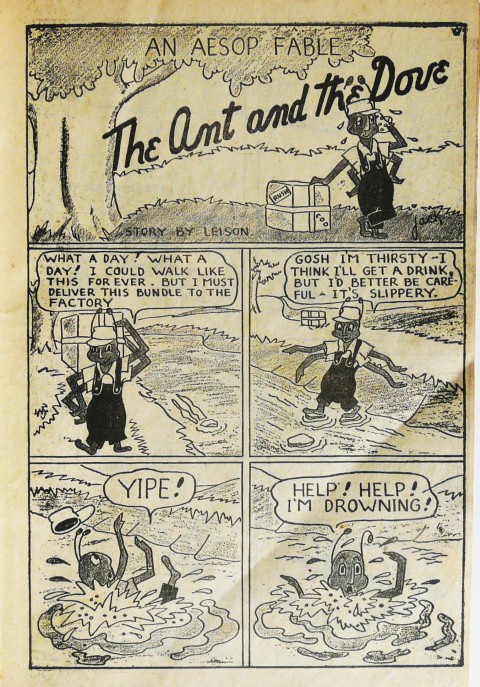
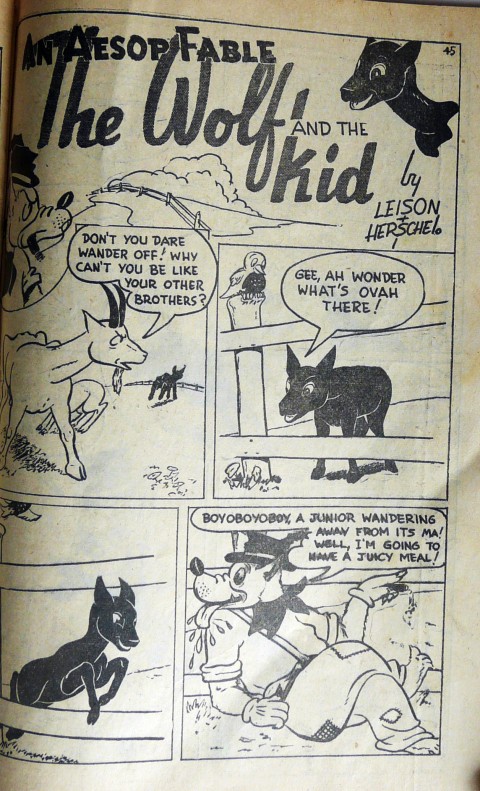
Two are from that Classics Illustrated style one shot called Famous Adventure Stories and are adaptations of Aesop’s fable of “The Ant and the Dove” and the other his fable of “The Wolf and the Kid.” Both are done by artists I know nothing about. The first is signed “Jack” (not anything to do with Jack Tremblay… I asked…) and the second “Herschel.”
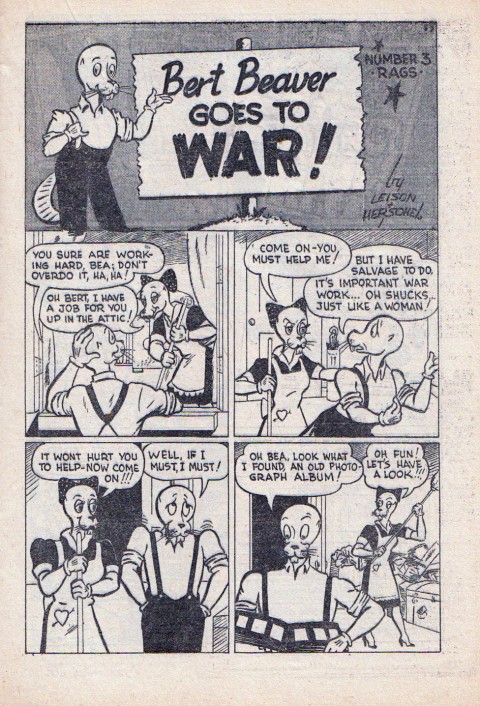
The third is also drawn by Herschel and is called “Bert Beaver Goes to War,” this particular one being what looks like the third installment called “Rags” and deals with saving rags that can be used for the home front war drive. Bert Beaver, therefore, doesn’t seem to be a one-off filler and demonstrates that toon-types did appear in Canadian Heroes Comics.
Bell Features is most remembered for its action packed costume heroes than anything else. When people today think of Canadian war time comics, affectionately called “The Whites,” they think of the Bell Heroes and this makes Bell Features titles probably the most collected of the bunch right now. But besides its heroes, Bell also had its toon types and more of these than any of the other WECA publishers. I don’t intend to be exhaustive in my account below but I will touch upon what I feel are the main high lights.
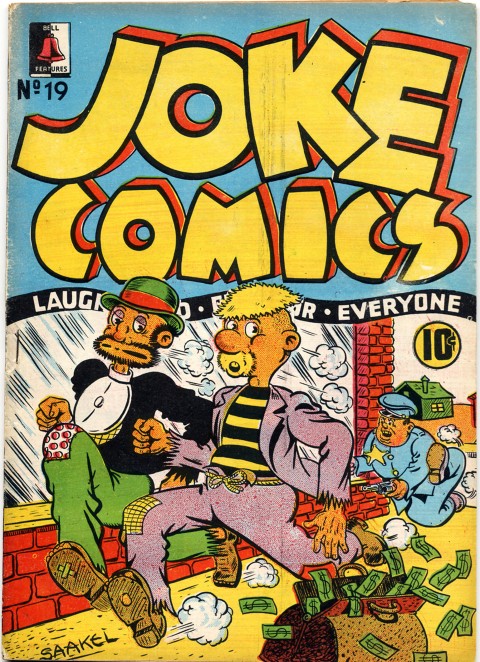
Perhaps the earliest of these appeared in Joke Comics with the creation of “Spike and Mike” by John O’Henley in the first issue and subsequently taken over and further identified with Ross Saakel by issue 4. “Spike and Mike were two down-on-their-luck hobos who got themselves into Laurel and Hardy types of situations and jams.
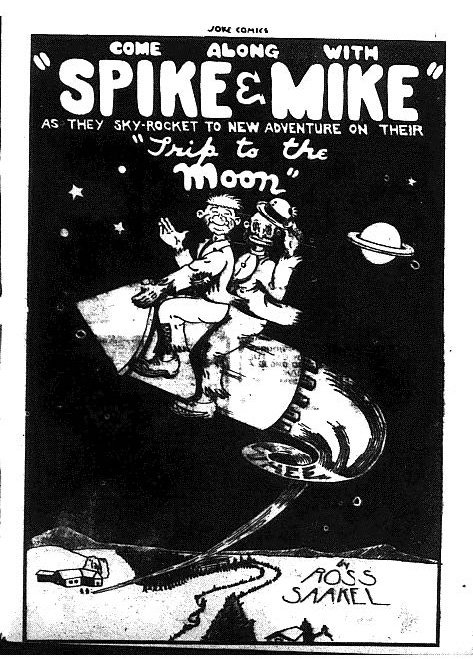
In one fantastic five issue story arc that runs from Joke No. 9 to Joke 13, they have an adventure on the moon. In fact, in issue 12 of this cycle they run into Private Stuff returning from furlough and just a few pages away from locating his own strip.
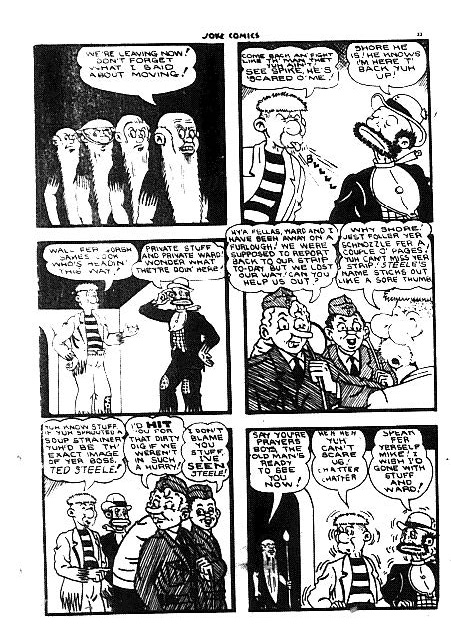
Saakel was a great cartoonist and also created “The Noodle” a diapered parody of Leo Bachle’s “The Brain” from Active Comics and a single instance of the western “Mild Will” which parodied Leo Bachle’s “Wild Bill” from Dime Comics.
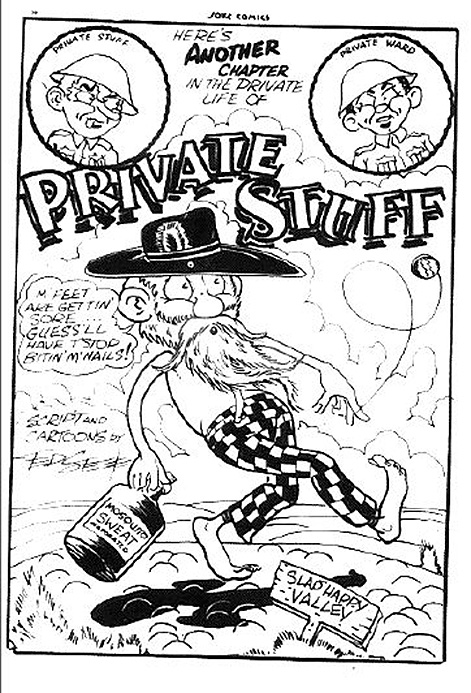
Tedd Steele created his army cartoon “Private Stuff” strip in the first issue of Joke Comics and it ran up to about the end of 1945 around which time he created his “Woody and the Wolf” strip in Wow Comics.
Also in this early phase of Bell toons we have to acknowledge the one page fillers and couple of covers (the first two issues of Joke Comics) by Lou Skuce that peppered all the Bell books right from Wow Comics No. 1.
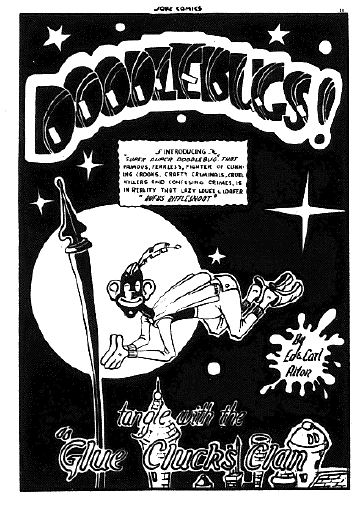
Artist Ed Alton teamed with his writing brother Carl and created the insect toons called “The Doodlebugs” in Joke Comics No. 7. The Altons other work seemed to appear mainly in Joke Comics as well and included titles such as “Lum and Tim Burr” (Commando Comics 20), “Pierre and Little Joe” (Joke Comics 16), and “Inky and Stinky” (Joke Comics 10).
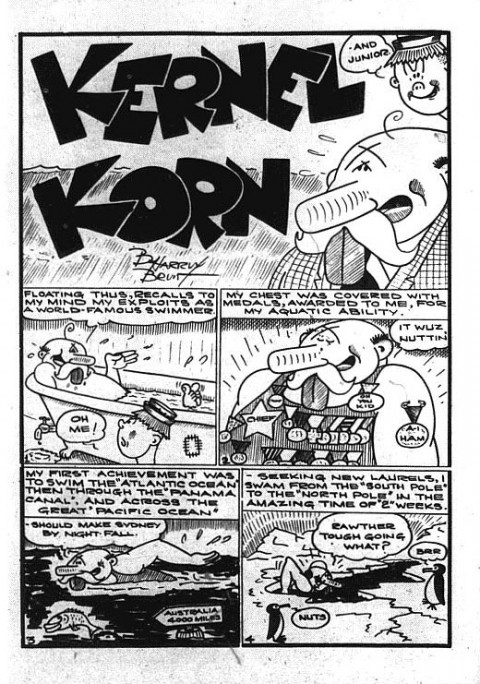
Harry Brunt had a number of cartoony features such as “Professor Punk,” “J. C. Flatbottom,” “Kernel Korn” and others scattered throughout most of the Bell titles. Similarly, Harry Moyer had “Izzy Brite” and “Happy Daze,” while Frank Keith chimed in with “Tugboat Toby,” “King Boho,” “Fuedin’ Days,” and “Casey Bones.” These short features and fillers provided the “chinking” that held together and insulated the great big Bell Features war time log cabin.
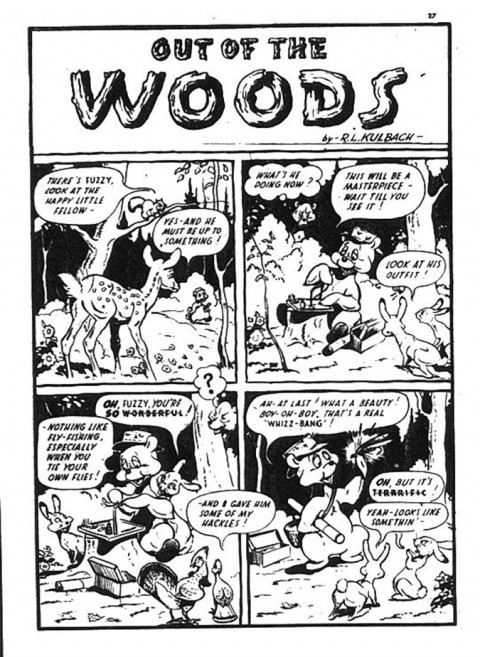
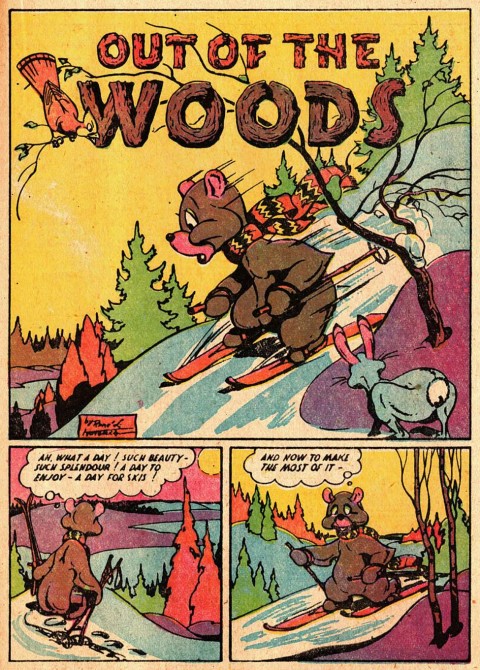
Kulbach also created some original funny animal covers for the Bell full colour funny animal reprint books that closed out their WECA titles such as New Dime 30 and New Triumph 27 (which is really Triumph 32).
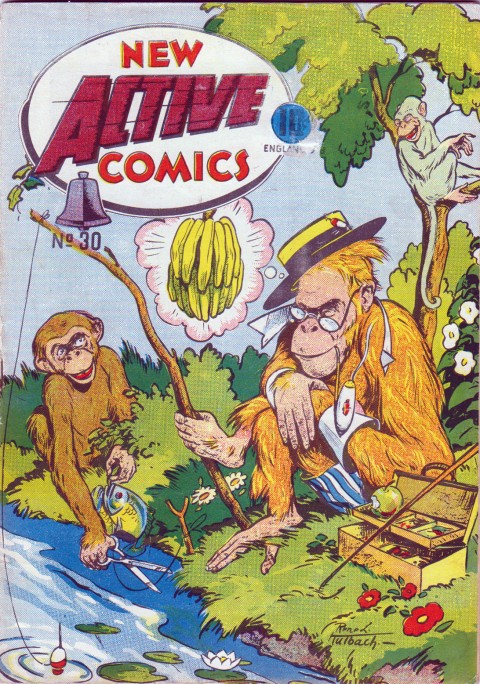
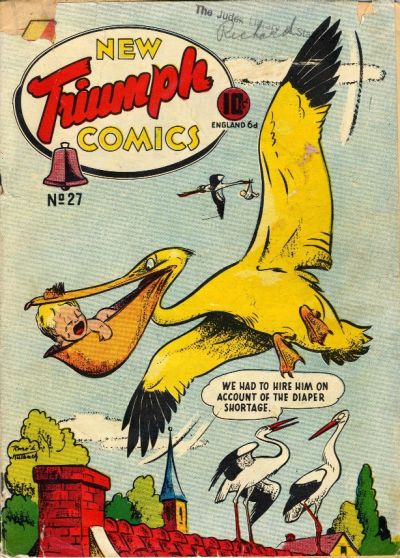
Finally, there’s the work of Bill Thomas which didn’t start to appear in Bell books until after the war. His detective feature “The Mongoose” had a private investigator with a Dick Tracy like profile whose assistant was a crow called “Tom” and was often perched on his shoulder.
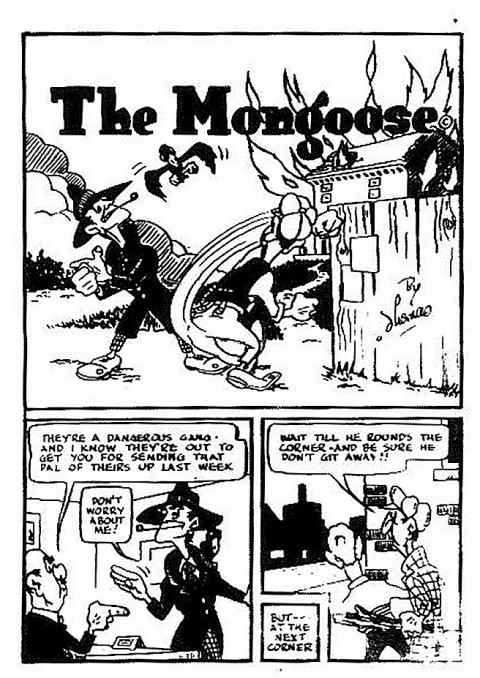
He also had the science fiction feature “Ivar of Mars,” the western “Ricco Vez,” and the more lighthearted, but ethnically tinged, “Chinook” (featuring an North American Indian), “Jinx” (featuring an Eskimo), and “Chick ‘n Fuzz” (featuring an interracial duo).
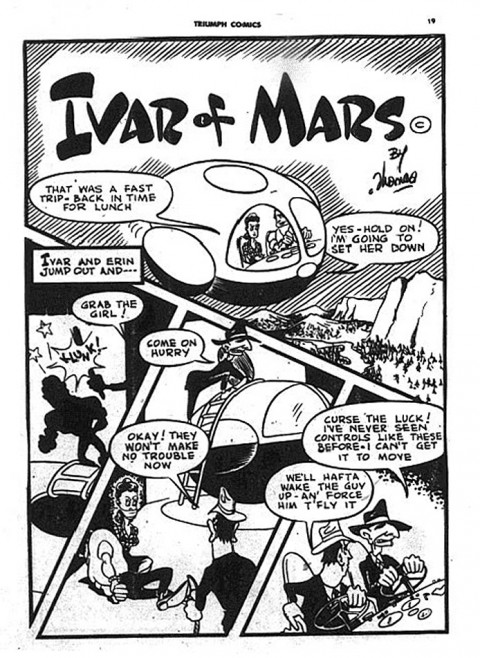
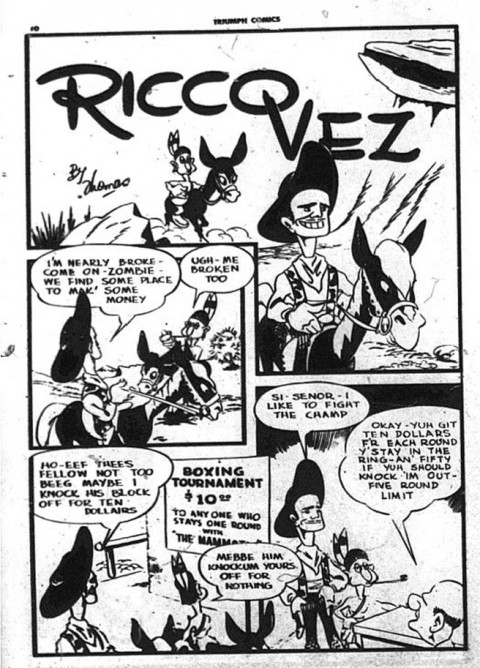
In the end, as the WECA period wound down after the second world war Bell too drifted more and more into toons and funny animals, just as Maple Leaf Publishers did on the west coast. It’s easy to dismiss toons as a strata of comics that operates beneath the planes of super hero, science fiction, detective, and western features, and as a genre just for the benefit of the younger crowd, but many of these toon features had a quality all their own and above all they were just plain fun.




Love these! Thanks so much for sharing these impossible to find comics with us!
Thanks, Bryan… comments like yours make it worthwhile doing these posts.